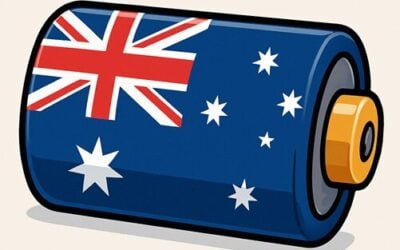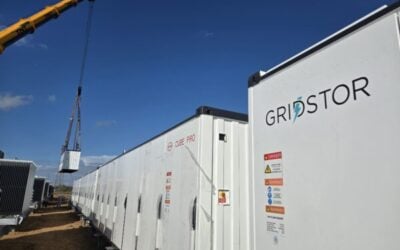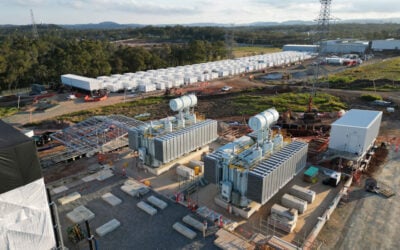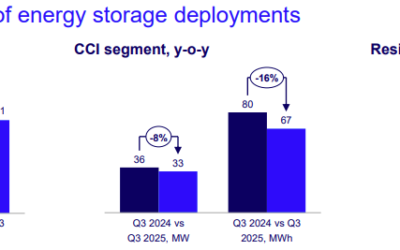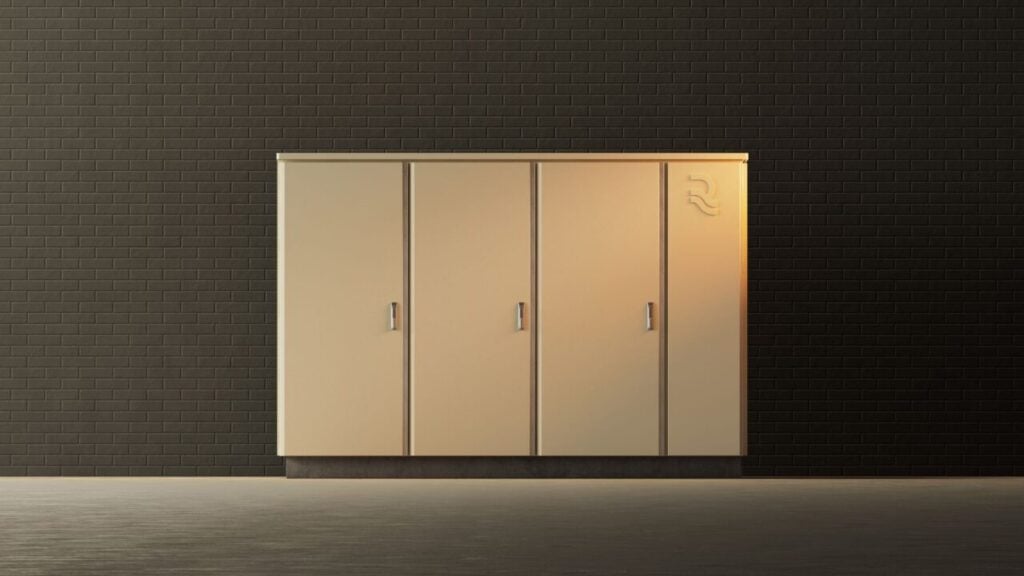
The Australian Renewable Energy Agency (ARENA) has committed AU$25 million (US$16.23 million) to support Melbourne-based startup Relectrify’s deployment of its world-first ‘inverterless’ battery energy storage system (BESS).
The funding will enable Relectrify to deploy up to 100MWh of its AC1 systems targeting commercial and industrial markets.
The AC1 system departs from conventional battery energy storage architecture by generating grid-compliant AC power directly from battery cells without requiring traditional inverter equipment.
Conventional battery systems store energy as direct current (DC) and require inverters to convert this power to alternating current (AC) for grid connection, adding complexity, cost, and potential failure points to the system.
Try Premium for just $1
- Full premium access for the first month at only $1
- Converts to an annual rate after 30 days unless cancelled
- Cancel anytime during the trial period
Premium Benefits
- Expert industry analysis and interviews
- Digital access to PV Tech Power journal
- Exclusive event discounts
Or get the full Premium subscription right away
Or continue reading this article for free
Relectrify’s technology uses proprietary CellSwitch electronics that provide individual control over nearly 4,000 battery cells within each 250kW/1MWh AC1 unit. This cell-level management enables the system to produce AC power directly while optimising performance across the entire battery pack, delivering what the company claims is 20-30% more energy output compared to conventional systems over their operational lifetime.
The technical advantages extend beyond power conversion efficiency. By eliminating inverters, the AC1 system reduces installation complexity, maintenance requirements, and overall system footprint.
Relectrify guarantees the system will retain 40% more of its original capacity after 20 years of daily cycling compared to conventional battery systems, while delivering 99% of available energy during each cycle.
ARENA CEO Darren Miller emphasised the technology’s potential to transform energy storage economics, particularly for commercial and industrial users who represent the “missing middle” in Australia’s energy transition.
The AC1 system targets this market segment by providing large energy users with greater control over their energy consumption while reducing costs and supporting renewable energy integration.
The funding builds on ARENA’s previous support for Relectrify’s second-life electric vehicle (EV) battery applications and positions the company to scale its new technology.
Included within this is a knowledge-sharing programme designed to spread lessons across the energy sector and support broader renewable energy integration efforts.
Relectrify CEO Jeff Renaud indicated that this is a strong endorsement of the AC1 BESS’s potential to transform battery energy storage.
The company has already expanded internationally, with Relectrify entering the Taiwan market, where the AC1’s proprietary electronics are manufactured and components assembled.
The AC1 funding coincides with ARENA’s latest AU$500 million Battery Breakthrough Initiative, which aims to strengthen the country’s position in global battery manufacturing and deployment.
The initiative provides grants and production incentives to domestic businesses, supporting the development of advanced battery technologies like Relectrify’s inverterless system.
The scheme also forms one of the critical pillars of the Albanese government’s National Battery Strategy and the wider Future Made in Australia agenda, an AU$22.7 billion programme to invest in reindustrialising Australia with a focus on clean energy tech, including batteries, solar PV, EVs and hydrogen.
Australian battery storage innovation landscape
Australia’s energy storage sector extends beyond Relectrify’s inverterless technology. Several domestic companies are developing new battery solutions across different market segments and applications.
For instance, Australian-based Allegro Energy, a developer of water-based redox flow battery energy storage solutions, unveiled Australia’s first locally manufactured microemulsion flow battery (MeFB) suited for long-duration energy storage (LDES) earlier this year.
The developer, backed by Origin Energy, Melt Ventures, and Impact Ventures, confirmed the technology, a type of redox flow battery, would soon debut at Origin’s Eraring Power Station, a black coal-fired plant in New South Wales. The plant is also home to one of the country’s largest battery storage developments.
The organisation’s CEO and founder, Dr Thomas Nann, spoke with ESN Premium about its new technology and how flow batteries could potentially beat lithium in the long run.
Another recent player in the Australian energy storage startup landscape is Green Gravity, which has developed a gravitational energy storage solution. The organisation recently signed a deal with mining company Wollongong Resources to trial its gravitational energy storage at the Russell Vale mine.
Green Gravity’s technology transforms legacy mineshafts into a base for its gravity-based energy storage technology. Due to Australia’s vast mining operations, the technology could provide the country with vast quantities of energy storage capacity.
The commercial application of Green Gravity’s gravitational energy storage technology is expected to deliver increments of up to 10MW lasting between 8 and 20 hours at individual mineshafts.
The technology’s potential attracted AU$9 million (US$6.02 million) in Series A capital funding last year, which was allocated to complete product development. Several investors, including HMC Capital, BlueScopeX, Pacific Channel and Sumisho Coal Australia Holdings, provided funding.


